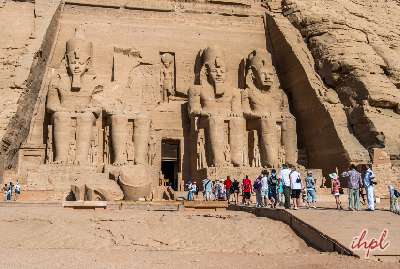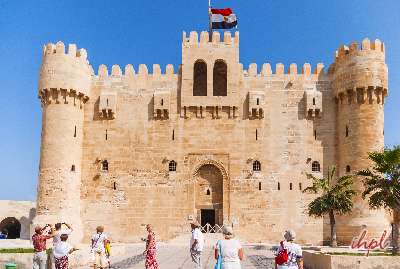The Pyramid of Djoser is a significant attraction of the Saqqara necropolis near Cairo, Egypt. It is the first pyramid built in Egypt, built around 2630 BCE. Imhotep designed this pyramid for the Pharaoh Djoser during the Third Dynasty. It has six steps, layers of stone and clay rose with a height of around 61 m, and was initially covered in white limestone. Hence, it is also known as the Step Pyramids of Djoser. It is a UNESCO World Heritage Site and a testament to the originality and craftsmanship of the ancient Egyptians.
It features a mortuary temple, courtyards, and a huge underground network of tunnels and chambers. After Djoser's death, this pyramid was dedicated to his worship and served as a center for religious rituals. This pyramid marked a key moment in Egyptian history and architecture and deserves a place on your bucket list. So, when choosing your Egypt tour packages from India and other parts of the world, visit here. To know more about this pyramid, check out the details below.
The Pyramids of Djoser at a Glance
| Category | Information |
| Location | Pyramid of Djoser, Saqqara, Egypt |
| Date of Construction | 27th century BCE |
| Height | 62 meters |
| Purpose | Funerary complex for Pharaoh Djoser |
Experiences at The Pyramids of Djoser
Step Pyramid of Djoser in Saqqara is one of the finest historical landmarks that will take you back in time. It is the pyramid that gave birth to monumental architecture in ancient Egypt. This colossal stone structure has fascinating layers and intricate designs that draw tourists throughout the year. From underground tunnels to walking around the pyramids, you can enjoy many travel experiences.
Get a Chance to Admire Ancient Architecture: It is one of the earliest monumental structures in human history and represents the great architectural evolution in Egypt. While enjoying a tour of the Step Pyramid of Djoser, you will admire its complex design and intricate details.
Learn About Ancient Egyptian Religion: The Step Pyramid complex has various temples, courtyards, and galleries. Each section of this pyramid is linked to religion and mythology. On the walls and nearby areas, you can witness the rituals and beliefs of ancient Egyptians.
Archaeological Insights: This pyramid has set the ground for archeology study and go through restoration work. Tourists visit here to delve into the history and research about these pyramids. A tour of this pyramid gives you a better outlook on construction techniques, historical significance, and the society that built it.






